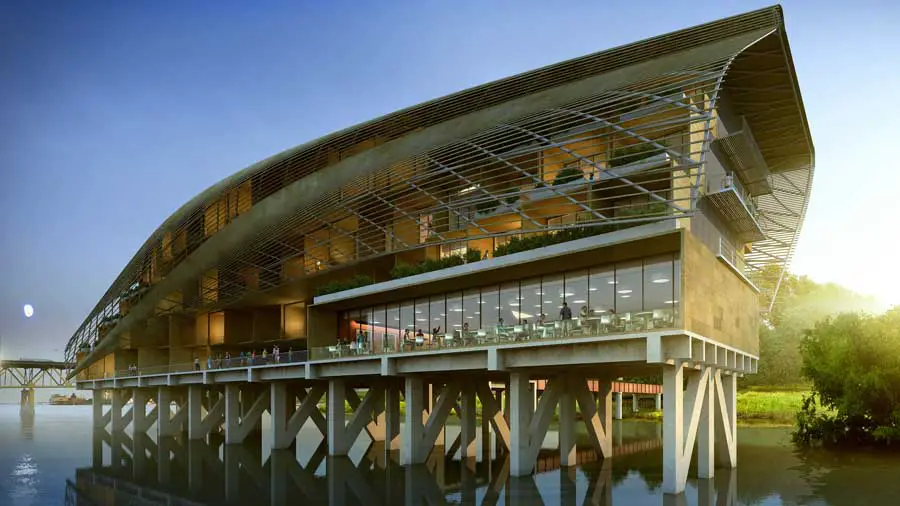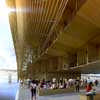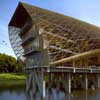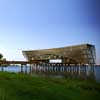Baton Rouge Municipal Dock Building, Louisiana Mooring Design, LA property image, US architect
Baton Rouge Municipal Dock, Louisiana
Baton Rouge Dock Development,Louisiana design by Trahan Architects, USA
Aug 23, 2011
Design: Trahan Architects
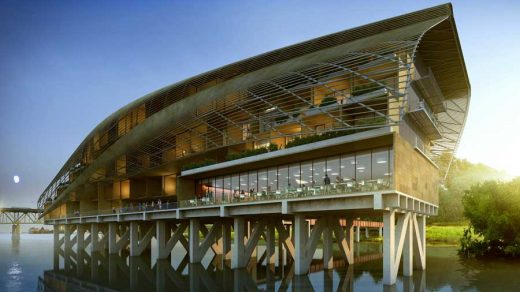
image courtesy of architects practice
Baton Rouge Municipal Dock
During the period from 1721 to 1926, Baton Rouge only had the most rudimentary public docking facilities. Mooring facilities consisted of simple, wooden wharfs which displayed no mechanical gear of any sort. Loading and unloading was slowly and laboriously performed by hand. At that time, this type of facility was adequate because vessels did not need deep water mooring and river levels remained relatively stable.
As the years passed and the confining levees were built, flood waters could no longer escape along low lying banks. River stages would rise and fall dramatically, sometimes as much as 47 feet, requiring more sophisticated, deep-water docking facilities.
With the completion of the Standard Oil Refinery in 1909, Baton Rouge’s economy was energized and became forever tied to the river and the growing petrochemical industry. In those days, private docking facilities owned by several private companies accounted for the all of the heavy cargo docking facilities around Baton Rouge.
In the early 1920’s, the need became apparent for a public docking facility to handle cargo for smaller shippers ad port users. By 1926, the Baton Rouge Municipal Dock had been completed at a cost of $550,000. This new facility enabled ocean-going vessels to off-load heavy cargo onto barges for upriver transport, or to rail for inland shipment through Baton Rouge.
It consisted of a long shed-like structure that reached out from the levee to the river’s edge. Extending out over the water, a large concrete pier offered a platform with a twelve ton locomotive crane that could be used to load or unload ships. The dock was originally designed to accommodate up to forty cars at a time.
In 1940 and again in 1945 dredging projects deepened the channel around the dock to 40 feet. However, silting continued on the east bank and the Municipal Dock was only accessible to deep water vessels during high water. By 1949 The Baton Rouge City Council created a city port authority.
The Municipal Dock was briefly reactivated but, by 1956 the new port facilities on the west bank of the river opened featuring a grain elevator capable of handling 30,000 bushels per hour, a molasses terminal and six thousand feet of cargo dock for deep water vessels. By 1968, with the completion of the interstate system which provided greater accessibility to trucking freight, the Municipal Dock continued to be outmoded by technological and infrastructural advancements.
Situated between Downtown Baton Rouge and Louisiana State University, the Municipal Dock lies on an emerging pedestrian thoroughfare that connects these two distinct urban areas. Identified as a primary component of public infrastructure that can once again provide access to the Mississippi River, the Municipal Dock can be transformed through a mixed-use development to offer a multiplicity of both public and private amenities.
Consisting primarily of residential units, this new mixed-use development will allow both residents and public sweeping vistas of the Mississippi River, the batture to the north, the Wetlands/Bridge to the south and the Levee to the east. Referencing the historic French Long Lot typology used during the agricultural development along the Mississippi River, the residential units are laid out perpendicular to the river in order to maximize both physical and visual accessibility.
The units slide in plan creating a range of exterior spaces such as private and communal roof terraces. Facing east and west, the units are shielded by a wooden screen that sweeps from north to south along the length of the dock. This meandering surface is articulated with wooden members that flow with varying densities to maximize views and to mitigate direct solar gain, reflected solar gain and views from public areas.
The public centerpiece to the mixed use development is a sheltered public plaza nested below the soaring span of residential units above. The plaza terminates the covered walkway which spans the batture and wetlands areas and is scaled to host a myriad of public events, from art installations and exhibitions, to chamber concerts and acoustic concerts, to parties and galas. Adjacent to the public plaza lies a restaurant space designed to attract public interaction and guarantee a dynamic development.
Baton Rouge Municipal Dock – Building Information
Project: Baton Rouge Municipal Dock
Program: Mixed Use Development
Floor Area: 56,700 g.s.f. + 7,200 g.s.f. designated for public areas
Location: Baton Rouge, Louisiana, United States
Cost: To Be Determined (USD)
Completion: To Be Announced
Requirements:
– reuse existing infrastructure
– maximize views of Mississippi River and surrounding context
– engage public
– residential units to adapt to market conditions
Principal Architect: Trey Trahan
Senior Designer: Mark Hash
Project Team: Judson Terry, Michael McCune, Chao-wei Su
Structural Engineer: Dennis Tow P.E. (LBYD)
Baton Rouge Municipal Dock images / information from Trahan Architects
Location: Baton Rouge, Louisiana, USA
Architecture in USA
Contemporary Architecture in USA
Trahan Architects – Major Designs
Holy Rosary Catholic Church complex, Louisiana, USA
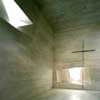
photo : Tim Hursley / The Arkansas Office
Holy Rosary Church
, Louisiana, USA

image from architect
Baton Rouge Library
, Louisiana, USA

image from architect
Louisiana State Sports Hall of Fame & Regional History Museum
About Trahan Architects
Trahan Architects, an award-winning firm led by Victor F. “Trey” Trahan, FAIA, has received international acclaim for work that is at once intensely personal, historically grounded, and aesthetically sublime.
Design: Foster + Partners
photo : Iwan Baan
Winspear Opera House
Comments / photos for the Baton Rouge Municipal Dock design by Trahan Architects USA page welcome.

